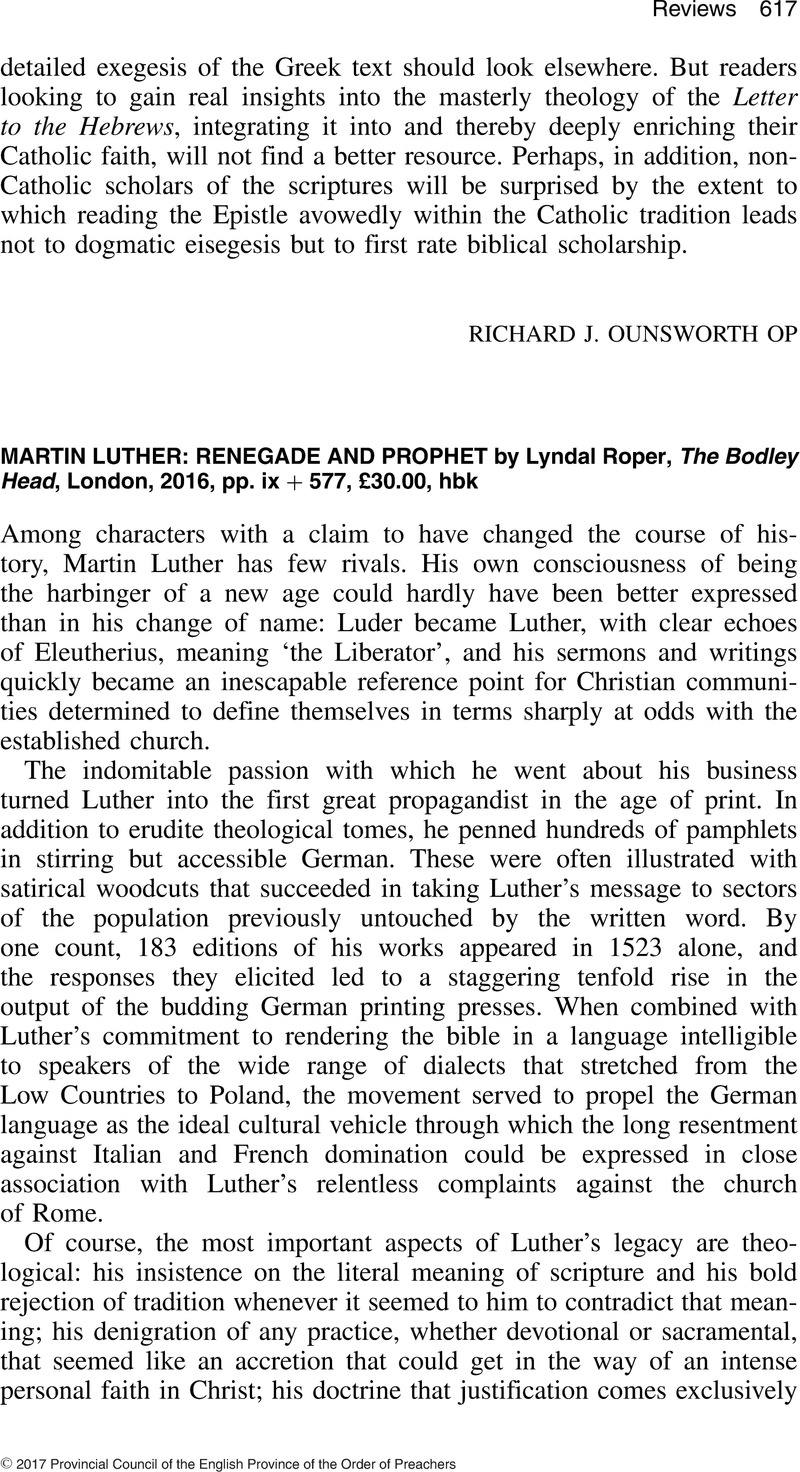No CrossRef data available.
Article contents
Martin Luther: Renegade and Prophet by Lyndal Roper, The Bodley Head, London, 2016, pp. ix + 577, £30.00, hbk
Review products
Martin Luther: Renegade and Prophet by Lyndal Roper, The Bodley Head, London, 2016, pp. ix + 577, £30.00, hbk
Published online by Cambridge University Press: 01 January 2024
Abstract
An abstract is not available for this content so a preview has been provided. Please use the Get access link above for information on how to access this content.

Information
- Type
- Review
- Information
- Copyright
- Copyright © 2017 Provincial Council of the English Province of the Order of Preachers

